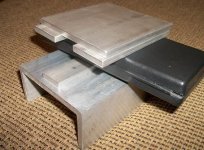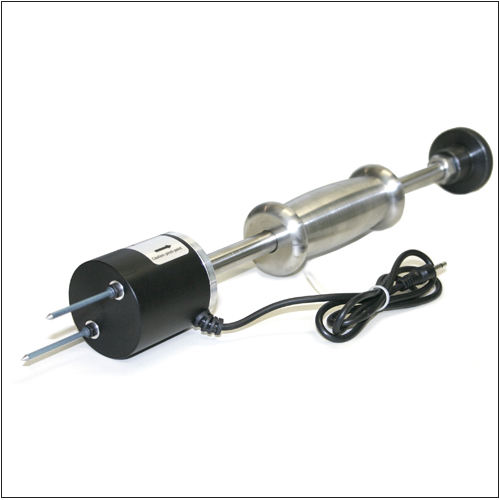spinningmagnets
100 TW
This build is a copy of EVTodds drive http://endless-sphere.com/forums/viewtopic.php?f=28&t=9652&start=0, Over time, I have grown to love the design. I am now determined to build one for myself, and also perhaps to sell a couple to local college students. I am also a fan of Keplers friction-drive, and after the local Australian demand slows to an even flow, I may purchase one to see if there's a market for them here in central Kansas. I am grateful to many members here for their help, but I couldn't have made it this far without Todds help and encouragement.
Todd is a professional machinist, and he has the tools and skills to make a quality product, I am just some old guy with a simple tool capability at the moment. Todds drive is built around a discontinued EV-Warrior one-way roller, which can occasionally be found on EBAY, but the problem has been that I can't find any source for new units.
The EV-Warrior roller has a knurled skin for traction, and it is hardened steel so it should last years with no visible smoothing. It also has a one-way bearing that allows the roller to remain in contact with the tire, and that means that the roller doesn't add any drag when you are only pedaling, while also allowing the drive to engage by simply adding power. Other powered bike kits sometimes employ a clutch or a lever to lift the entire drive unit off of the tire.
Some of the larger metal parts can be purchased off the web at http://www.onlinemetals.com/merchant.cfm?step=2&id=60 , I have not tried them yet, as I recently found a local supplier of the basic material. Todd was able to use a 3" channel to keep his drive as compact as possible. I decided to use a 4" X 4" square Al tube with 1/4" thick walls that has been chopped to 4" long and sliced lengthwise to make a channel with 2" deep sidewalls. The only reason I chose this is, that it is readily available here in quantity, and affordably priced. It can also be sliced to provide a channel with walls as deep as 3-3/4" as an option.
Todd milled slots in his channel which creates sliding guides when the drive is drawn deeper into the tread during engagement. This also keeps the parts-count low and the design simple. I don't have that capability, so I am using 3 Al flat-bars to similate his guides. They have been glued in place to ensure proper alignment during the next operation, and then drilled + bolted. The 3 Al flat-bars are 1/4" thick, the middle one is one-inch wide, and the two on the sides are each 1-1/2" wide
It is not neccessary to cut an additional lip into the side bearing mount-holes, but by doing that, I am able to flush-mount the bearings, which allows them to be covered and retained by a simple flat plate. It also allows me to use a shaft pre-cut by the vendor to 4". After marking and drilling the pilot holes, I used the larger hole-saw to cut a 0.060" deep circular groove for the bearing lip, and then I used a slightly smaller diameter hole-saw to cut a through-hole. I don't know yet if these rough methods will be precise enough to provide acceptable alignment in order to avoid high RPM vibrations. I will know in about one month.
Custom shaft lengths are available for anyone who prefers to have the supplier cut them, but affordable pre-cut shafts are rapidly available from existing shelf stock. I used McMaster-Carr for a case-hardened steel shaft, 1/2" diameter. Other vendors will work, but the shaft surface must be hardened for the one-way freewheel bearing to work.


Todd is a professional machinist, and he has the tools and skills to make a quality product, I am just some old guy with a simple tool capability at the moment. Todds drive is built around a discontinued EV-Warrior one-way roller, which can occasionally be found on EBAY, but the problem has been that I can't find any source for new units.
The EV-Warrior roller has a knurled skin for traction, and it is hardened steel so it should last years with no visible smoothing. It also has a one-way bearing that allows the roller to remain in contact with the tire, and that means that the roller doesn't add any drag when you are only pedaling, while also allowing the drive to engage by simply adding power. Other powered bike kits sometimes employ a clutch or a lever to lift the entire drive unit off of the tire.
Some of the larger metal parts can be purchased off the web at http://www.onlinemetals.com/merchant.cfm?step=2&id=60 , I have not tried them yet, as I recently found a local supplier of the basic material. Todd was able to use a 3" channel to keep his drive as compact as possible. I decided to use a 4" X 4" square Al tube with 1/4" thick walls that has been chopped to 4" long and sliced lengthwise to make a channel with 2" deep sidewalls. The only reason I chose this is, that it is readily available here in quantity, and affordably priced. It can also be sliced to provide a channel with walls as deep as 3-3/4" as an option.
Todd milled slots in his channel which creates sliding guides when the drive is drawn deeper into the tread during engagement. This also keeps the parts-count low and the design simple. I don't have that capability, so I am using 3 Al flat-bars to similate his guides. They have been glued in place to ensure proper alignment during the next operation, and then drilled + bolted. The 3 Al flat-bars are 1/4" thick, the middle one is one-inch wide, and the two on the sides are each 1-1/2" wide
It is not neccessary to cut an additional lip into the side bearing mount-holes, but by doing that, I am able to flush-mount the bearings, which allows them to be covered and retained by a simple flat plate. It also allows me to use a shaft pre-cut by the vendor to 4". After marking and drilling the pilot holes, I used the larger hole-saw to cut a 0.060" deep circular groove for the bearing lip, and then I used a slightly smaller diameter hole-saw to cut a through-hole. I don't know yet if these rough methods will be precise enough to provide acceptable alignment in order to avoid high RPM vibrations. I will know in about one month.
Custom shaft lengths are available for anyone who prefers to have the supplier cut them, but affordable pre-cut shafts are rapidly available from existing shelf stock. I used McMaster-Carr for a case-hardened steel shaft, 1/2" diameter. Other vendors will work, but the shaft surface must be hardened for the one-way freewheel bearing to work.





